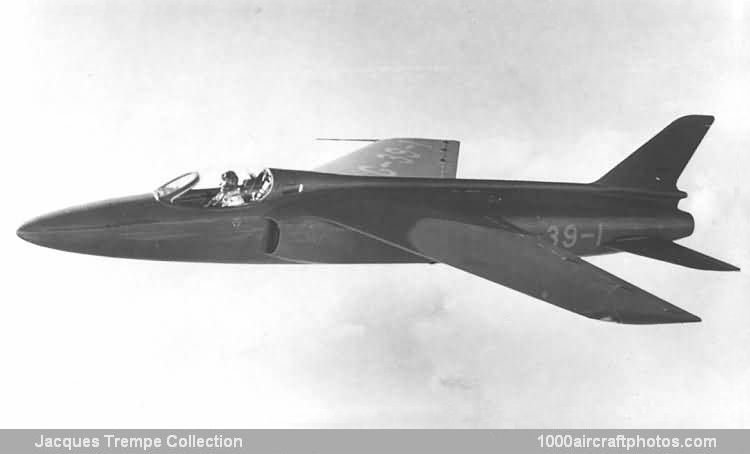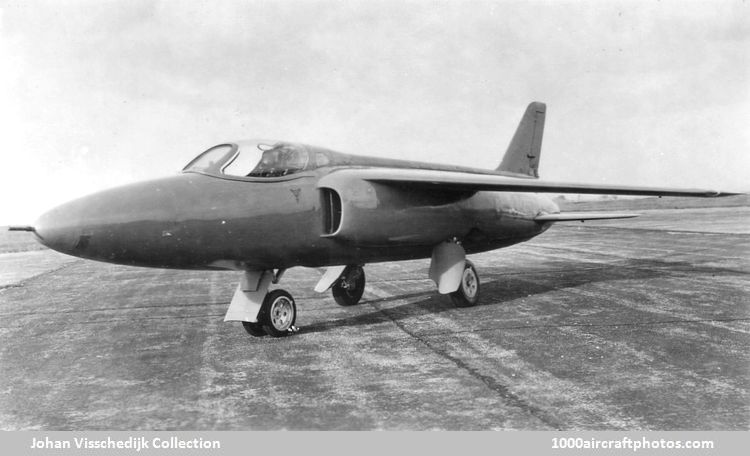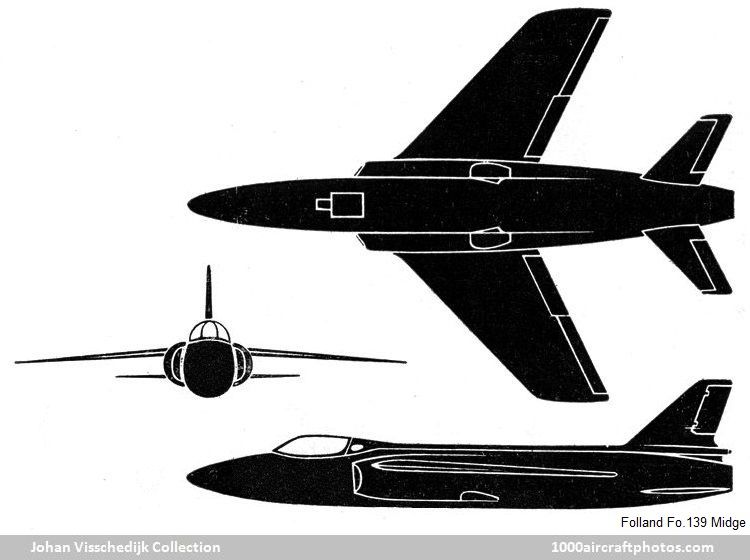10/31/2023. Remarks by Johan Visschedijk: "Edward Petter, Chief Designer at Folland Aircraft Ltd. at Hamble, Southampton, UK, commenced design of a single seat lightweight fighter ground-attack aircraft in 1951, initially envisaging the use of a 3,800 lb (1,724 kg) st Bristol BE 22 Saturn turbojet. Discontinuation of the Saturn led to adoption of the BE 26 Orpheus, a low-powered unarmed proof-of-concept demonstrator (with a 1,640 lb, 744 kg st Viper 101) being built as the Fo.139 Midge.
Noticeable features of the Midge were the lengthy nose, the slim fuselage with the canopy faired into the long dorsal spine, and the long bulged lateral intakes with lips just under the cockpit. The high set wing with considerable anhedral had 40° sweep, low-aspect ratio and blunt tips. The fin was small, swept and Hunter-shaped with a "bullet" at the fuselage joint. (Salient detail, Sir Sidney Camm, Chief Designer of Hawker, had provided Petter with the Hawker Hunter wind tunnel data.) The swept blunt-tipped tail plane was mounted centrally on the fuselage. The nosewheel retracted backwards while mainwheels complete with air brakes retracted into the fuselage sides. The Midge had a span of 20 ft 8 in (6.30 m) and a length of 28 ft 9 in (8.76 m)
The Fo 139 Midge was flown for the first time from Boscombe Down on August 11, 1954, and during extensive flight trials it dived at supersonic speed. The Midge had originally outboard manually operated ailerons, subsequently it was fitted with the wing that was designed for its successor, the Fo.141 Gnat fighter. The Gnat wing had a slightly larger span and was provided with power-operated inboard ailerons."


